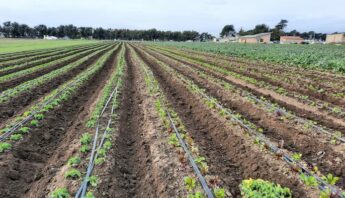For immediate release January 22, 2015
Contact:
Paul Towers, PAN, 916-216-1082
Veena Singla, NRDC, 415-875-6125
National Experts Call for a More Productive and State-focused Process for Evaluating Pesticides in California
Health advocates call on California officials to ensure that implementation of these recommendations preserves public health protections for workers and communities
Sacramento, CA – The National Academy of Sciences (NAS) released a new report today calling on officials at California’s Department of Pesticide Regulation (DPR) to complete risk assessments more promptly and include more California-specific exposure information to better protect workers and public health. Health advocates caution that increased productivity must be achieved while preserving the integrity and scientific validity of the assessments.
For example, there is an urgent need for the Department to complete the long-delayed assessment of the neurotoxic pesticide chlorpyrifos – which is heavily used on certain California crops and linked to learning problems and developmental delays – while incorporating the most up-to-date science and California-specific data.
“The NAS report affirms the concerns we’ve raised over the years; the Department of Pesticide Regulation needs to take additional steps to improve pesticide illness reporting and pesticide use reporting in communities across California, especially for those most impacted by hazardous pesticide use,” said Sarah Aird, co-director of Californians for Pesticide Reform.
The report recommends greater transparency, public engagement and accountability, calling for assessments that reflect the on-the-ground realities of California communities, including pesticide use reporting information, air monitoring data, and pesticide illness incidents. Chlorpyrifos, for example, is one of the top ten most widely used pesticides near schools in California’s agricultural regions according to a recent Department of Public Health report, and has frequently been found in independent air and water sampling.
The report affirmed the importance of safety assessments that take into account the on-the-ground experience of pesticide use in California’s agricultural communities.
“California’s risk assessment process for pesticides should be groundtruthed in the reality of what’s found in air, food and water as well as what’s reported,” said Kristin Schafer, Policy Director, Pesticide Action Network. “Risk assessment cannot be a purely academic exercise and should reflect the realities children and farmworkers face, including ongoing and repeated exposures to highly hazardous pesticides.”
The report urges officials to articulate a clear framework for evaluating pesticides, especially highly hazardous pesticides, to guide future assessments. Similarly, the report calls for increased transparency and consistency in risk assessments.
“California’s pesticide safety assessments must put people’s health first,” said Veena Singla, staff scientist at the Natural Resources Defense Council. “The Department of Pesticide Regulation must take a close look at the recommendations in the report and ensure that public health protections are the number one priority.”
The Department contracted with the National Research Council at the National Academy of Sciences to conduct the year-long review that led to this report. Concerns and recommendations for strengthening DPR’s risk assessment process were also highlighted in a UCLA report released in 2013.
###







